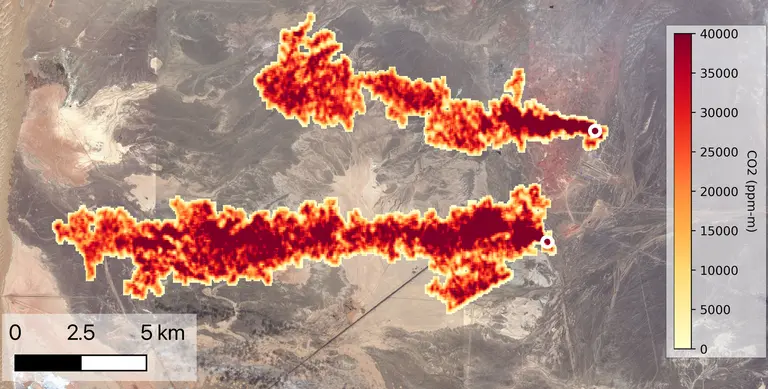Washington, D.C.— Scientists could gain access to higher-than-ever-resolution maps of global carbon dioxide and methane within the decade thanks to a proposed Caltech-led project on which Carnegie Science’s Anna Michalak is deputy principal investigator.
The Carbon Investigation, or Carbon-I, was recently named by NASA as one of four finalists for upcoming space missions; the two winning projects will be announced next year and will launch in 2030 and 2032.
Right now, global atmospheric carbon dioxide and methane can only be accurately measured by satellites at resolution of several square kilometers, which poses challenges in tropical regions and other areas where thick cloud cover is common. In contrast, Carbon-I would spend three years mapping greenhouse gasses globally at a resolution of about 300 meters. It could also zoom in on specific locations with a resolution as low as a 30-meter to make it easier to pinpoint emissions.
"By measuring accurately at fine spatial resolution, Carbon-I will solve two problems: fill data gaps in the tropics and characterize point source emissions globally at the same time," said the project’s principal investigator, Caltech’s Christian Frankenberg, who is also a JPL research scientist.
Beyond just spotting emissions, Carbon-I would be able to simultaneously measure carbon dioxide and methane, the two major greenhouse gases emitted by human activity, as well as carbon monoxide, which can help pinpoint greenhouse gas emissions from certain sources such as wildfires. Being able to measure all three gases from a single platform would help elucidate the processes that drive natural and human-made greenhouse gas emissions.
“Because of its ability to measure multiple greenhouse gases simultaneously and to map their abundance at high spatial resolution globally, Carbon-I will finally make it possible to constrain both human and natural emissions with the precision and accuracy needed to inform climate action,” added Michalak, who is the Inaugural Director of the Carnegie Science Climate and Resilience Hub and a professor by courtesy at Stanford University.
The Carbon-I proposal is an excellent example of the type of bold new research directions in life an environmental science research that will be advanced by the alliance Carnegie Science and Caltech announced in July 2023.
The four finalist proposals, including Carbon-I, were submitted under the auspices of NASA’s new Earth System Explorers Program. It is part of the agency’s goal of identifying and selecting high-quality projects that will provide a deeper understanding of the global systems and cycles that shape our planet and how they are being negatively affected by human activity. This initiative was launched in response to recommendations in the National Academies of Science, Engineering, and Medicine’s 2017 Decadal Survey for Earth Science and Applications from Space.
“The proposals represent another example of NASA’s holistic approach to studying our home planet,” said Science Mission Directorate Associate Administrator Nicky Fox. “As we continue to confront our changing climate, and its impacts on humans and our environment, the need for data and scientific research could not be greater. These proposals will help us better prepare for the challenges we face today, and tomorrow.”
If Carbon-I is ultimately chosen by NASA to go to space, it will fly aboard a spacecraft being designed and built by Lockheed Martin, which would also perform some mission support.
“Lockheed Martin has built and launched more than 120 weather and environmental spacecraft and is looking forward to this mission which will provide unprecedented global coverage to increase understanding of greenhouse gases,” said the company’s Director of Weather and Earth Science Matthew Mahlman. “We’ll bring innovation, technological expertise and the most advanced satellite technology using our LM 400 satellite bus to enhance operability, propulsion and other key capabilities to support the unique needs of this environmental mission.”
The project's science team also includes researchers from JPL, Harvard University, UC Davis, the University of Washington, and the National Oceanic and Atmospheric Administration.

